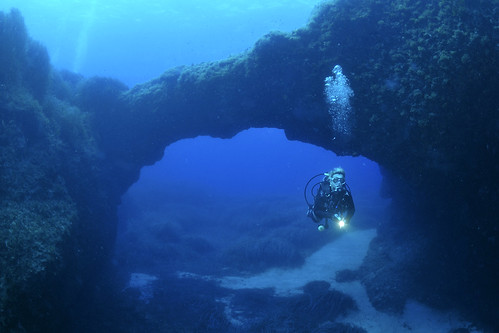This has been a very interesting discussion to follow, particularly the topic of overhead environments.
Since most of the people participating in this conversation are well seasoned, very experienced diving professionals, I'm going to weigh in with an opinion just to offer a view point from someone who is not. After all, this is the basic discussion forum.
I originally got OW certified about 20 years ago through PADI. I dove off and on over the next 10 years or so and ended up going through PADI AOW and Nitrox and then I did NAUI rescue and public safety diver. (I work in public safety so I was able to do these courses through the GA fire academy.) Unfortunately life happened and I quit diving for a long time. I'm just now getting back into it after a hiatus of about 10 years. In many ways that puts me on the same level as a brand new diver as far as I'm concerned. (I only relate this because nobody here knows me and to help shed light on my point of view.)
IMO one of the biggest problems with this topic (and the 60' vs. 130' depth limit to a degree) is applying the concept of absolutes. It is my belief that you do the new diver a disservice when you take this approach with them.
If you take a new, average dive trainee out into the ocean for a 60' check off dive, certify that individual as an OW diver, and then tell them that overhead environments are an ABSOLUTE no-no that's all well and good. Well what if the very next dive they go on they encounter this?
Is it an overhead environment? Technically, yes. But the newly minted OW diver is going to look at it (and the other divers swimming under it) and wonder what the big deal is. They're going to head over and swim through it like everyone else is doing and think you as their instructor are crazy for telling them they're not trained/equipped/qualified/ready to swim through the arch. The problem this creates is that you as their instructor and a diving professional have now lost credibility with them, at least to some degree. As this line of reasoning continues, the new diver now starts to wonder what else you were wrong about.
On their next dive out they might encounter this:
Swimming under the arch was a piece of cake so how hard could this be? It has huge openings in all sides, plus one in the roof. So in they go and the next thing they know they've kicked up the silt and now they can't see. Suddenly they realize they're tangled up in God-knows-what and can't get loose and they drown.
Perhaps a better approach would be for the diving industry and training agencies to acknowledge the concept that all overheads are not created equal and adjust their teaching methodology to account for that. I don't pretend to have the perfect solution, but maybe the AOW course could be modified or a specialty course introduced that would teach recreational diving students important criteria to look for and how to identify the features that distinguish a safe swim through from a more advanced wreck penetration. Teach them to identify entanglement hazards, narrow passageways and openings (too narrow to pass through while sharing air), and the hazards of silt-out and loss of visibility. I'm not necessarily saying to teach them how to deal with/mitigate these problems at this level, but if they at least know what hazards to look out for then they will be more likely to avoid them and you (their instructor) will maintain a greater level of credibility with them than the guy who simply says "NO."
Just a thought.
(Images above were found on Google/Facebook.)






